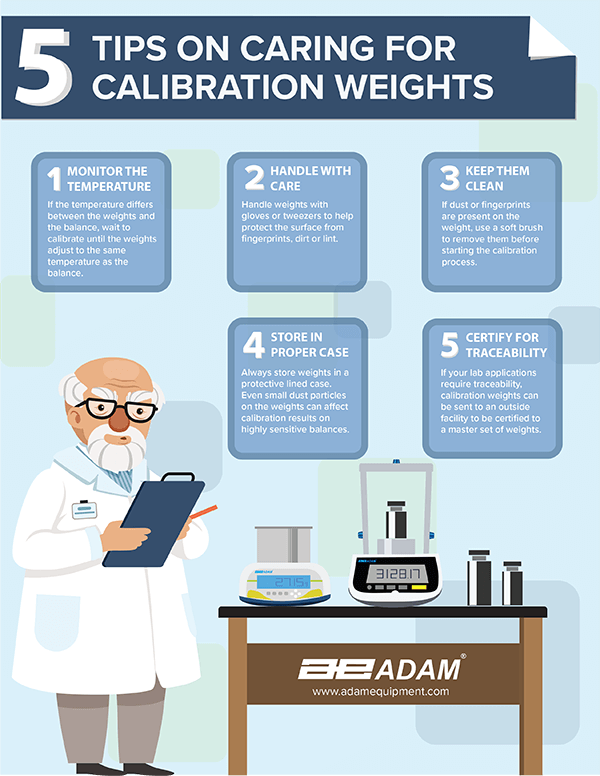Calibration is necessary, no matter the application or weighing instrument. Proper calibration ensures the traceability, reliability and accuracy of the results obtained from a scale or balance. Calibration weights are an investment that must be cared for in order to maintain their usefulness. We’ve compiled some useful tips to keep calibration weights working properly.
1 Monitor the temperature
If the temperature differs between the weights and the balance, wait to calibrate until the weights adjust to the same temperature as the balance.
NIST states that if thermal equilibrium is not achieved during mass calibration, convection currents can be generated, which can lead to erroneous readings. Because of the acute precision and small numbers scientists work with, these errors can be difficult to notice, but they can add up to a large amount. As such, it’s paramount to avoid such mistakes, particularly in labs. In addition, temperature can affect the material the calibration mass is built from, resulting in contraction or expansion that could affect the results.
2 Handle calibration weights with care
Handle weights with gloves or tweezers to help protect the surface from fingerprints, dirt or lint. Our hands can leave a greasy or oily film (even if you washed your hands!) that can affect the readings of mass during measurements, and can even cause permanent damage to the weight because of corrosion. Even large weights should be handled with care. Make sure the cloth or gloves used to handle the weights do not have lint or loose materials that could get on the weights.
3 How to clean calibration weights
If dust or fingerprints are present on the weight, use a soft brush to remove them before starting the calibration process. Do not touch the brushes’ bristles with your bare hands. Clean the brush regularly and thoroughly.
4 Store in proper case
Always store weights in a protective lined case. Even small dust particles on the weights can affect calibration results on highly sensitive balances. The case should be clean and free of any particles, and designed to hold calibration weights. Make sure the weights stay separated during storage or transport. Do not stack the weights and make sure the box remains closed and in a place with no extreme temperatures, humidity or vibrations.
5 Certify for traceability
If your lab applications require traceability, calibration weights can be sent to an outside facility to be certified to a master set of weights. Certifications ensure the weights as accurate and precise, and makes audits and other verifications easier.
Click here to download your free caring for calibration weights guide.


